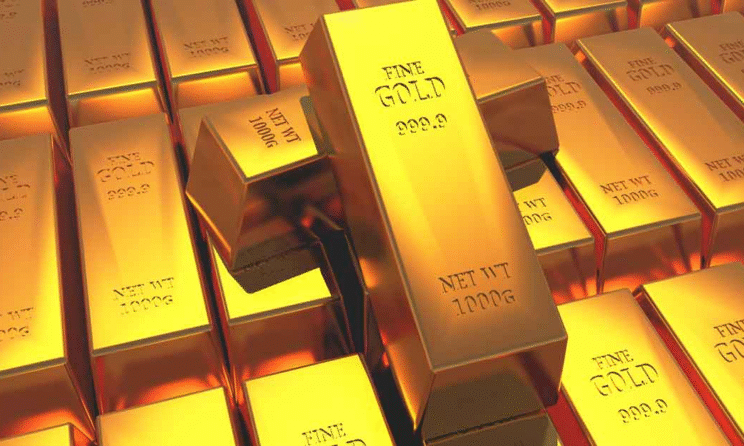
Gold has always been a symbol of wealth and prosperity in Indian culture. Whether it’s for religious purposes, weddings, or investments, the yellow metal holds immense significance across states. However, one fascinating aspect about gold in India is that its price varies from state to state despite being a globally traded commodity. Specifically, the gold rate in Punjab is often different from other Indian states. Factors such as local demand, taxes, transportation costs, and market dynamics contribute to this variation. In this article, we will delve into why the gold price in Punjab is distinct, focusing on the roles of local factors, purity, and broader economic influences.
Understanding Gold Pricing in India
Before we explore the gold rate in Punjab, it’s essential to understand how gold pricing works in India. Gold prices are influenced by international markets, but they are localized based on multiple factors in each Indian state. The global gold rate is primarily determined by international currency fluctuations, interest rates, geopolitical tensions, and supply and demand. In India, additional components such as state-specific taxes, gold purity, and local supply chains come into play.
While the base price of gold is uniform across the globe, state-wise variations in India occur due to:
- State-level taxes and duties: Each Indian state levies different taxation policies, which impact the final gold price.
- Transportation and logistics costs: Variations in infrastructure and transportation costs often influence gold rates in different regions.
- Local market demand: The demand for gold in specific states dictates its pricing, as higher demand may lead to premium charges.
Punjab holds a special place in India’s gold market due to its unique cultural practices, socio-economic factors, and regional dynamics. These attributes contribute to why the gold rate in Punjab often differs from that in other states.
Factors Influencing Gold Rate in Punjab vs. Other Indian States
There are a number of factors that explain variations in gold prices across Indian states. Let’s look at some of the key contributors specific to Punjab.
1. Regional Demand for Gold in Punjab
One of the main reasons why the gold rate in Punjab differs is the region’s high and consistent demand for gold. Punjab is known for its vibrant culture, where gold plays an essential role in weddings, religious ceremonies, and other celebrations. Families in Punjab often purchase gold not just as adornments but also as a form of financial security for future generations.
Additionally, Punjab’s agricultural economy ensures that during harvest seasons like Rabi and Kharif, farmers and rural households tend to invest heavily in gold, further increasing demand. When demand is greater in a particular region, local jewellers may charge slightly higher premiums, making the 24k gold rate in Punjab stand apart from other states.
2. State-specific Taxes and Duties
Gold prices in India include the Goods and Services Tax (GST) along with import duties, which are applied uniformly across the nation. However, some states add local taxes and duties, which slightly increase the price of gold. Punjab doesn’t impose any separate tax on gold sales, but differences in state-specific infrastructure costs and levies indirectly impact the overall gold rate.
For example, cities within Punjab such as Amritsar, Ludhiana, and Jalandhar may have varying logistical costs based on local circumstances, influencing the regional pricing of gold.
3. Transportation and Logistics Costs
Another critical factor affecting the gold rate in Punjab is its distance from gold-importing ports such as Mumbai and Chennai. Punjab is a landlocked state located far from these main ports, which leads to higher transportation costs when bringing raw gold into its markets. These logistics costs are passed on to the consumer, contributing to Punjab’s slightly higher gold rate compared to some coastal states.
4. Purity Standards and the Popularity of 24K Gold in Punjab
The people of Punjab often prioritize high-purity gold, especially 24K gold, which consists of 99.9% gold content. Unlike lower-purity forms such as 22K or 18K gold, 24K gold offers greater value as an investment. However, the 24K gold rate in Punjab is also subject to significant fluctuations because it is purely influenced by global market trends and international bullion prices.
While other states predominantly use 22K gold for jewellery due to its firmness and durability, Punjab’s preference for 24K gold leads to unique pricing dynamics. Jewellers may add a slight premium to account for the higher demand for 24K gold items.
5. Jewellery Making Costs in Punjab
Gold prices are often accompanied by “making charges,” which refer to the cost of crafting gold jewellery. Punjab is famous for its intricate designs and traditional embellishments. Jewellers in cities like Ludhiana and Amritsar often charge higher making fees due to the skilled workmanship required for unique designs. Consequently, when calculating gold costs, this factor can also increase the 24K gold rate in Punjab compared to other Indian states.
6. Local Market Competition
Gold prices are influenced by competition among sellers in a particular locality. Punjab boasts a higher density of jewellers, particularly in urban hubs like Chandigarh and Ludhiana. These jewellers compete to attract buyers, sometimes underpricing or marginally increasing rates to align with local market conditions. This competition leads to slight fluctuations in the gold rate in Punjab, even between cities within the state.
7. Cultural and Seasonal Influences
Punjab is a state deeply rooted in tradition, and gold buying peaks during festive and wedding seasons. For instance, occasions such as Diwali, Karwa Chauth, and Vaisakhi see a surge in gold purchases, elevating the pricing in the state. During these times, local jewellers may charge higher premiums due to increased demand. Other Indian states may experience seasonal fluctuations in gold rates, but the cultural vibrancy of Punjab creates a more pronounced impact here.
Comparing the Gold Rate in Punjab to Other States
Let’s compare the gold rate in Punjab to states such as Maharashtra, Kerala, and Karnataka, where prices are generally lower due to better access to ports and logistical facilities.
- Maharashtra: Mumbai, being close to major ports, offers lower transportation costs. This often results in slightly cheaper gold prices compared to Punjab.
- Kerala: Known as a gold-loving state like Punjab, Kerala has a streamlined supply chain established through its coastal access. This leads to competitive pricing, often better than landlocked regions like Punjab.
- Karnataka: Bangalore and other cities benefit from efficient transportation and lower regional taxes, which reduce gold costs.
When looking at the 24K gold rate in Punjab, its pricing trend is unique but comparable to cultural hubs with high gold demand such as Rajasthan.
Should You Buy Gold in Punjab?
Despite slight price differences, Punjab remains a lucrative place to buy gold due to its reputation for reliability and high-quality craftsmanship. Local jewellers offer an extensive range of designs and carry substantial goodwill in the market. Whether you’re investing in gold bullion or purchasing exquisite jewellery, Punjab’s jewellers ensure authenticity and value for money.
Conclusion: A Distinct Gold Pricing Model
Gold prices in Punjab differ from other Indian states due to localized factors like regional demand, transportation costs, state-specific market conditions, and cultural preferences. The prominence of 24K gold rate in Punjab arises from its unparalleled purity standard, popular among buyers looking for long-term investments.
Understanding these dynamics equips buyers to make informed decisions when investing in gold. While the gold rate in Punjab may slightly differ compared to coastal regions, its high-quality offerings make it worth the additional premiums. After all, gold is not just a commodity in Punjab; it’s a reflection of cultural heritage, financial stability, and timeless beauty.





